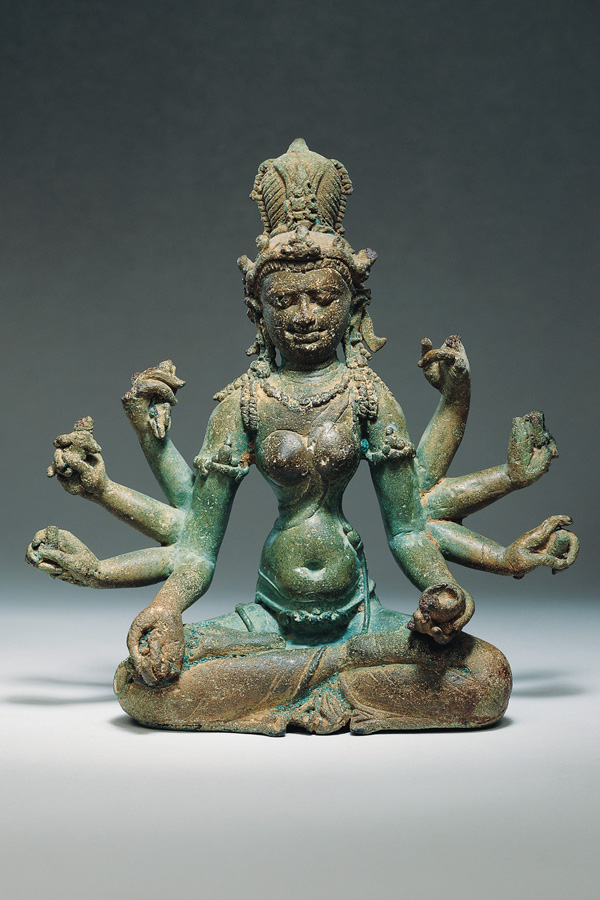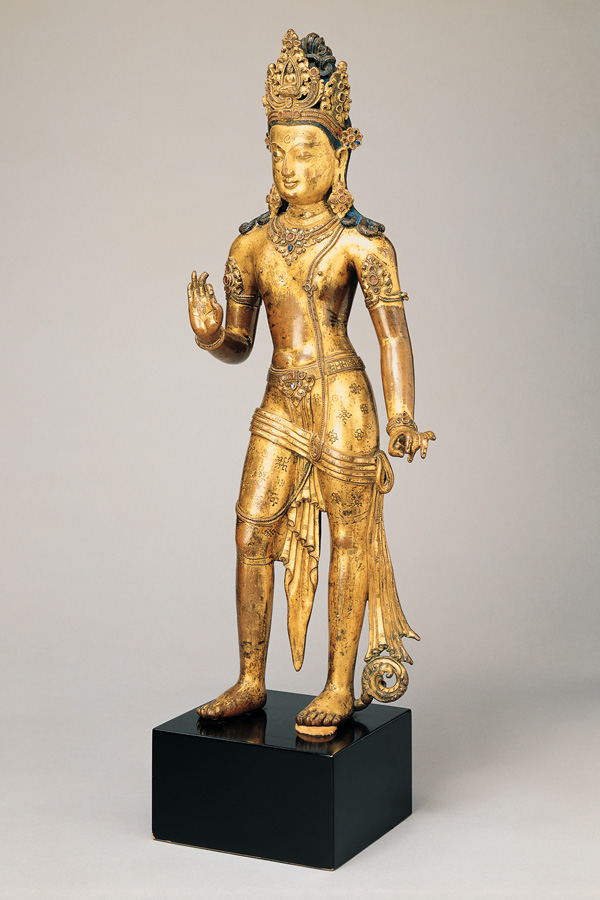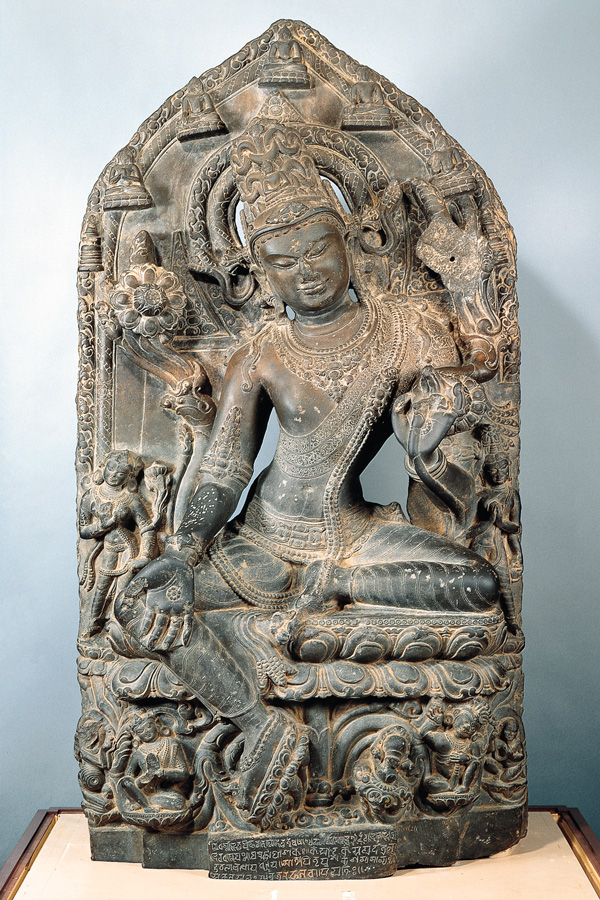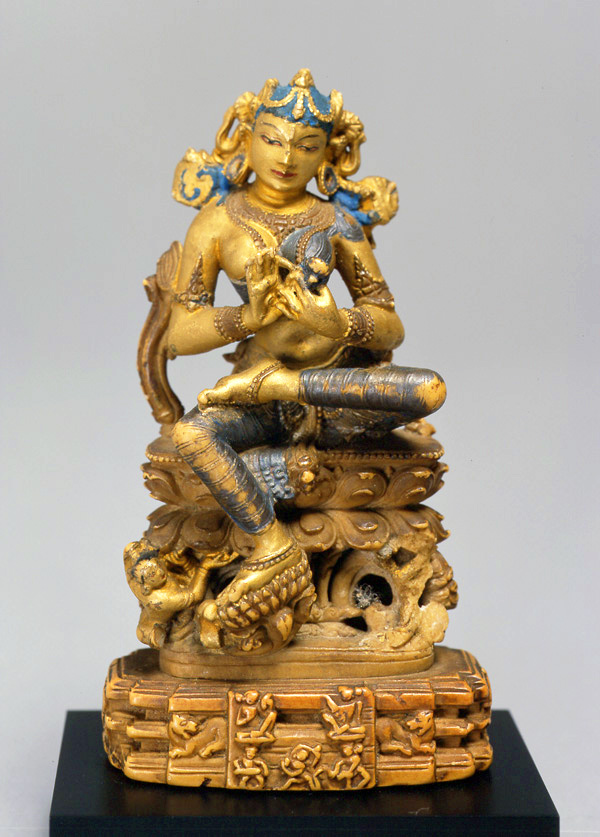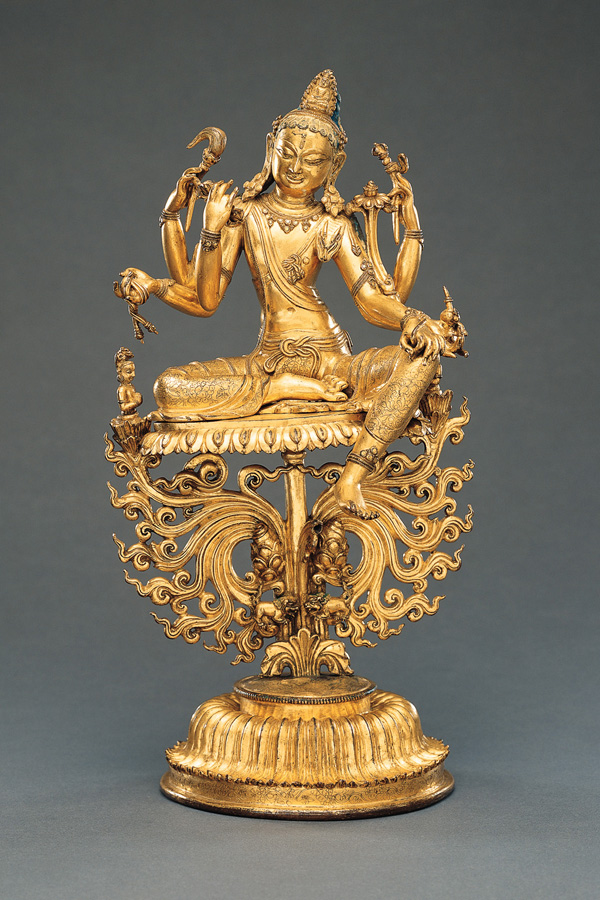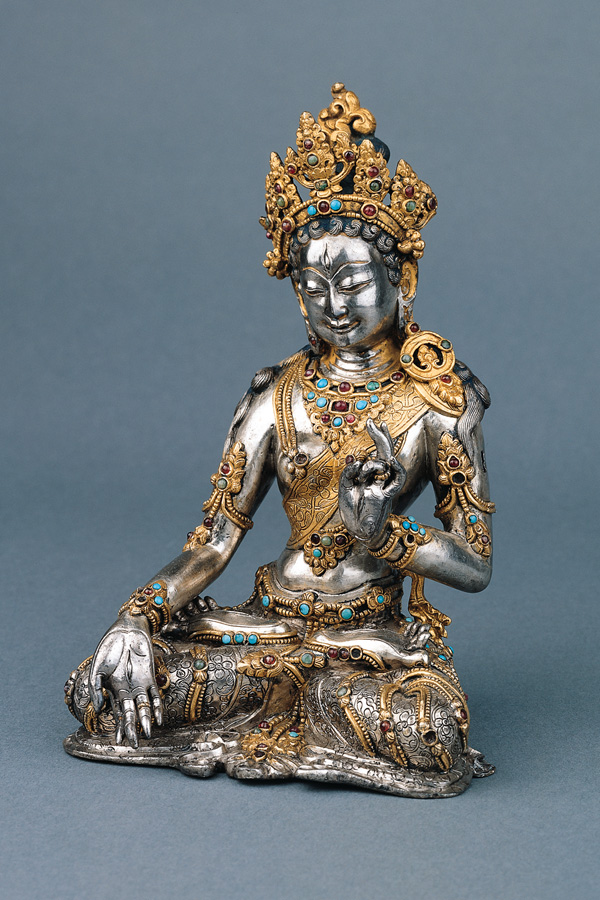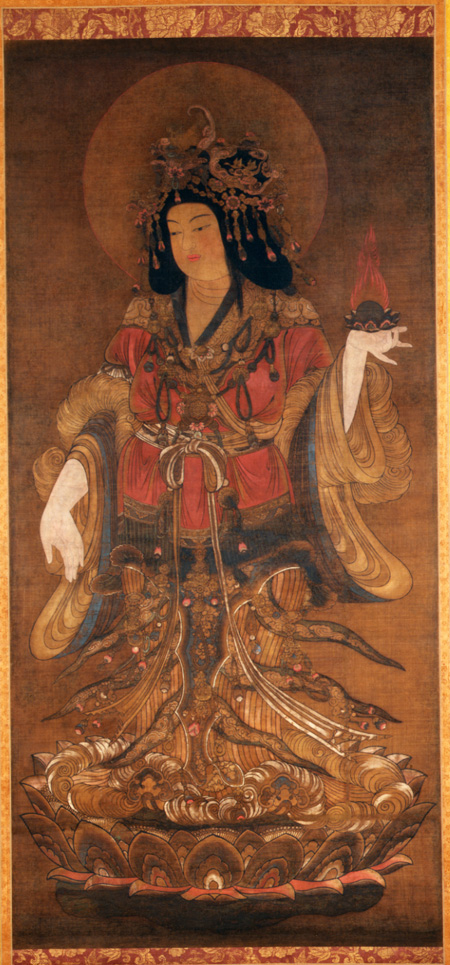Home / Traditional Inspirations
Traditional Inspirations
The seven objects displayed in this gallery originate from different places and times, yet all portray deities from the Buddhist pantheon. Seen together, they embody the transmission and transformation of iconography from different religious traditions in Asia.
As Buddhism migrated across Asia and merged with existing faiths, gods and goddesses came to be worshipped in new forms, and then were depicted in these new manifestations. Kumano, the inspiration for Mariko Mori’s video and originally a revered Shinto pilgrimage site, was gradually transformed as Japan’s native religion fused with Buddhism. Similarly, Buddhism was changed as it absorbed external influences. The image of Kichijoten in this gallery, for example, is a Buddhist form of Laksmi, the Hindu goddess of beauty and wealth.
Buddhist bodhisattvas, in particular, appear in a vast range of forms across Asia. Bodhisattvas are enlightened beings who choose to remain in the world to save all living beings, despite having the ability to end their own cycle of reincarnation and enter into the state of nirvana. In their many and varied manifestations, bodhisattvas are able to extend compassion to diverse devotees. The bodhisattvas on display include a protective deity of the Kathmandu Valley in Nepal, and another from India, who offers nectar from his fingers to a starving ghost.
Indonesia, Sumatra
Shrivijayan style, 9th century
Copper alloy
Asia Society, New York: Mr. and Mrs. John D. Rockefeller 3rd Collection, 1979.84
The eight arms of this figure suggest she is a Buddhist goddess, but we cannot be sure which one. The attributes that the goddess once held in her arms, and that would have identified her, are now missing or damaged. The pose of the goddess, which is static without being stiff, her high, thin waist, and the treatment of her hair suggest that this figure was made in Sumatra during the time of the great kingdom of Shrivijaya (seventh–ninth centuries). Sumatra was once a major center of Esoteric Buddhism, known for its worship of female deities.
Nepal
Transitional period, late 10th–early 11th century
Gilt copper with inlays of semiprecious stones
Asia Society, New York: Mr. and Mrs. John D. Rockefeller 3rd Collection, 1979.47
The use of inlays spread from Nepal to Tibet, and such decorative inlays are among the most distinctive features of Himalayan sculpture. This Avalokiteshvara is one of the earliest extant examples showing the use of semiprecious stone inlays to decorate a sculpture. Although only a few stones still remain, originally all the circular depressions in the jewelry would have been filled with multicolored stones.
India, Bengal
Pala period, late 11th–early 12th century
Phyllite
Asia Society, New York: Mr. and Mrs. John D. Rockefeller 3rd Collection, 1979.39
This stone image of the so called Sky-gliding (Khasarpana) form of the bodhisattva Avalokiteshvara once decorated an architectural niche. He demonstrates his compassion for all living beings by holding his right hand in the gift-bestowal gesture (varada mudra) above a “hungry ghost,” who kneels beneath him on the far left of the pedestal. Avalokiteshvara feeds this hungry ghost, who is missing his head, with drops of nectar that flow from his fingers.
India
Late 11th–early 12th century
Pyrophyllite with gilding and blue pigment
Asia Society, New York: Mr. and Mrs. John D. Rockefeller 3rd Collection, 1979.38
This delicately carved image represents one of two of the most important goddesses in Buddhism, either Tara or Prajnaparamita. The figure’s posture of relaxation and her gesture of teaching are used in representations of both deities. The two goddesses can often be distinguished by the different lotuses they hold, but as only fragments remain on this sculpture, the figure’s identity remains uncertain. This image, carved from creamy stone, has been gilded and painted blue. The use of blue pigment in the hair is common on images worshipped by Tibetan Buddhists.
Nepal
Three Malla Kingdoms period, 16th–17th century
Gilt copper alloy
Asia Society, New York: Mr. and Mrs. John D. Rockefeller 3rd Collection, 1979.50
This sculpture presents Avalokiteshvara in the form of the All-seeing Lord of the Infallible Noose (Amoghapasha Lokeshvara), identified by the rope held in his bottom hand. Once ensnared in this sacred noose, the devotee must tell the truth about and to himself, an act that can sever the bonds of illusion and help a practitioner achieve enlightenment. Amoghapasha Lokeshvara is one of the guardian deities of the Kathmandu Valley in Nepal and is also worshipped for day-to-day well-being.
Tibet or Mongolia
17th century
Silver with gold and inlays of semiprecious stones
Asia Society, New York: Mr. and Mrs. John D. Rockefeller 3rd Collection, 1979.52
This lavishly decorated sculpture represents White Tara, an embodiment of infinite compassion. White Tara has seven eyes—a third eye on her forehead and one each on her hands and feet—that allow her to look upon all beings with wisdom and compassion. This image demonstrates the attention to ornamentation typical of later Tibetan sculpture. Made of silver, the goddess wears a skirt and gold scarf carved with floral motifs. Her elaborate jewelry is cast in gold and inlaid with precious stones, and lotuses were probably once attached to slots in her upper arms.
Japan
Possibly Meiji period (1868–1912)
Hanging scroll; ink and color on silk
Asia Society, New York: Mr. and Mrs. John D. Rockefeller 3rd Collection, 1979.208
In this painting, Lakshmi, worshipped in Buddhism as the goddess of wealth and happiness, stands on a lotus pedestal. She holds her right hand in the gesture of reassurance, and a wish-granting jewel rests in her left palm. Lakshmi’s multi-layered robes and crown belong to a tradition of Buddhist painting that began in China and Japan in the eighth century. This painting, however, displays a fascination with detail that is characteristic of the Meiji period (1868–1912). The elaborate crown and the frothy appearance of the sleeves and hemline are among the attributes that suggest a late date.


